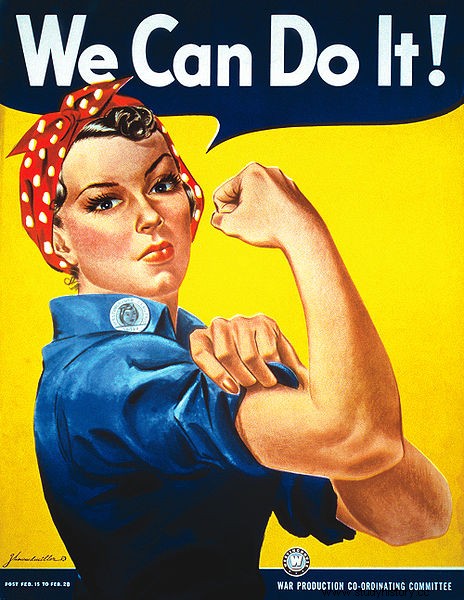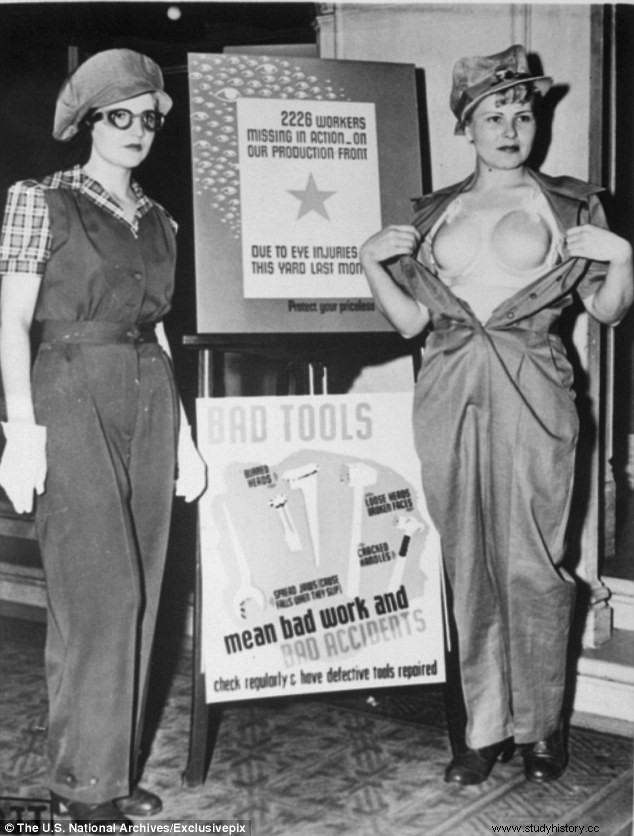The entry of the USA into World War II meant, as in the other countries involved, the abandonment of many jobs in the industrial fabric occupied by the men who fought in the war. Jobs until now held only by men -such as in construction, shipyards, steel mills, armament factories...- were filled by women who, in this way, served to demonstrate that they could hold jobs until now only reserved for men and women. gain some independence. This new role for women came to create a cultural icon… Rosie the Riveter (Rosie the Riveter) with the tagline "We can do it! » (We can do it).

Thus, the Women's Secretariat, dependent on the Department of Labor, among the many decisions it took "to promote the well-being of salaried women, improve their working conditions, increase their efficiency and promote their opportunities for employment profitable «, decided to modify the work uniforms due to the physical differences between men and women… the SAF-T-BRA , a rigid plastic bra designed by Willson Goggles that protected the breasts of female workers.

But this was not the only measure… In the forties, the peek-a-boo hairstyle caused a sensation among the female public. popularized by the actress Veronica Lake .

Veronica Lake
The problem is that that hairstyle with part of the hair covering one eye was not very practical in certain jobs and even caused an accident at work (partial vision, got caught in machines...). It seems that the authorities advised Hollywood producers that Veronica Lake change her style. Whether it was a coincidence or not, the fact is that since the actress changed her hairstyle, her film career suffered a sudden halt.
Before finishing this article I would like to point out that women also actively participated in the Second World War. By the end of the war, more than 150,000 women served in the Women's Army Corps (WAC), the first women to serve in the US Army without being nurses.
